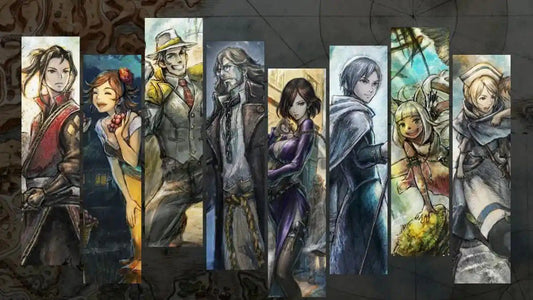Horror video games have been a popular genre since the early days of gaming, but they have evolved considerably over the years. From the classic text-based horror games of the 1980s to the graphically stunning horror games of today, the evolution of horror games has been marked by innovation, technological advancement, and a shift towards increasingly immersive and psychologically complex gameplay experiences. In this article, we will explore the evolution of horror video games, from the early days of Silent Hill to the upcoming release of Resident Evil Village.
The Early Days of Horror Video Games
The early days of horror video games were marked by primitive graphics, limited processing power, and a reliance on text-based gameplay. One of the first horror video games was 1981's Haunted House, released for the Atari 2600. Haunted House was a simple maze game in which the player had to find and collect three pieces of a magical urn while avoiding the game's various ghosts and other monsters.
Another early horror game was the text-based adventure game, The Lurking Horror, released in 1987 for MS-DOS. The Lurking Horror was a Lovecraftian horror game that took place in a fictional university called G.U.E. Tech. The game's graphics were limited to ASCII art, and the gameplay involved typing commands into a text parser to interact with the game's environment.
The Rise of Survival Horror
The term "survival horror" was coined in the mid-1990s to describe a new wave of horror video games that combined elements of survival gameplay with horror themes. One of the earliest and most influential examples of survival horror was 1996's Resident Evil, released for the PlayStation. Resident Evil was a groundbreaking game that featured a mix of action and horror gameplay, and it quickly became a commercial and critical success.
Resident Evil was followed by a number of other successful survival horror games, including Silent Hill, released in 1999 for the PlayStation. Silent Hill was a psychological horror game that focused on exploration, puzzle-solving, and atmospheric horror. Like Resident Evil, it was a commercial and critical success, and it spawned a number of sequels and spin-offs.
The Evolution of Horror Video Games
In the years that followed the release of Resident Evil and Silent Hill, horror video games continued to evolve and innovate. One of the most significant developments was the move towards more immersive and realistic graphics, made possible by advances in computer hardware and software. This allowed horror game developers to create increasingly detailed and realistic environments, characters, and creatures, making the horror experience more visceral and intense.
Another major development in the evolution of horror games was the increasing focus on psychological horror. While earlier horror games had relied primarily on jump scares and other cheap thrills to scare players, more recent horror games have focused on building a sense of dread and unease through environmental storytelling, subtle hints, and intricate sound design.
One example of a horror game that exemplifies this trend is 2015's Until Dawn, released for the PlayStation 4. Until Dawn is a narrative-driven horror game that combines cinematic storytelling with gameplay mechanics that allow players to make choices that affect the outcome of the story. The game's graphics are highly realistic, and the game's psychological horror is built through a combination of environmental storytelling, character development, and sound design.
The Future of Horror Video Games
The future of horror video games looks promising, with several highly anticipated releases on the horizon. One in recent memory is Resident Evil Village, released in 2021. Resident Evil Village is the latest entry in the long-running Resident Evil series, and built on the franchise's legacy of immersive, atmospheric horror.
Another highly anticipated horror game was Scorn, released for the Xbox Series X/S in 2022. Scorn is a first-person horror game that takes place in a surreal, nightmarish world filled with grotesque creatures and twisted landscapes. The game's visuals are inspired by the works of H.R. Giger, the artist behind the designs for the Alien franchise, the game was a unique and terrifying experience.
In addition to these recent titles, there are a number of other horror games in development that promise to push the genre in new and exciting directions. As technology continues to evolve and developers experiment with new gameplay mechanics and storytelling techniques, the future of horror video games looks promising for fans of the genre. Remakes of Silent Hill 2, Resident Evil 4 are on the horizon,with a Dead Space remake also making an appearance in Feb, we also designed a tee based on the games iconic Sun Cola! Check out out here.
In conclusion, the evolution of horror video games has been marked by innovation, technological advancement, and a shift towards increasingly immersive and psychologically complex gameplay experiences. From the early days of text-based horror games to the stunning visuals and intricate sound design of modern horror games, the genre has come a long way. With several highly anticipated releases on the horizon, the future of horror video games looks bright, and fans of the genre can look forward to many more thrilling and terrifying experiences in the years to come.





